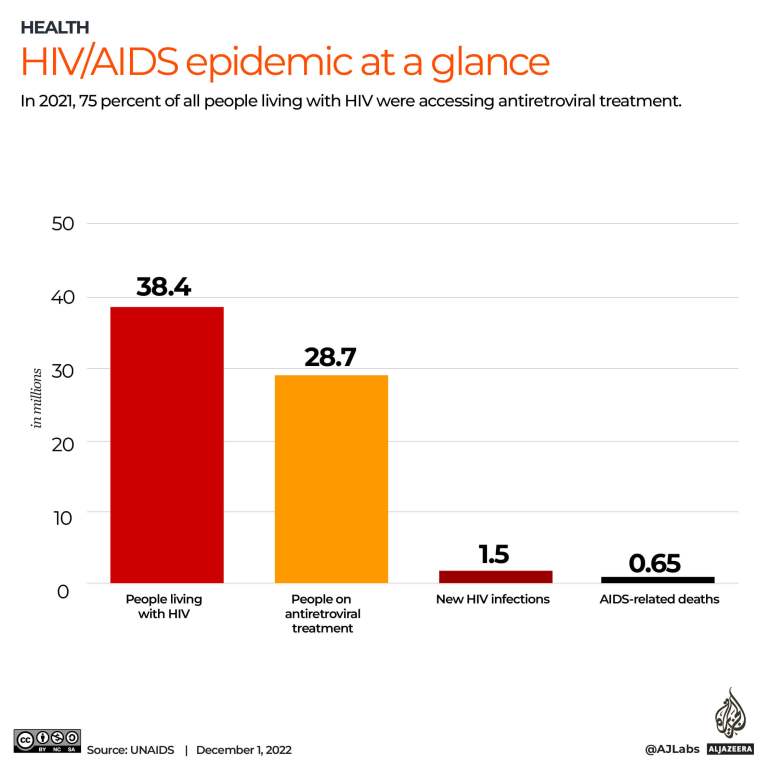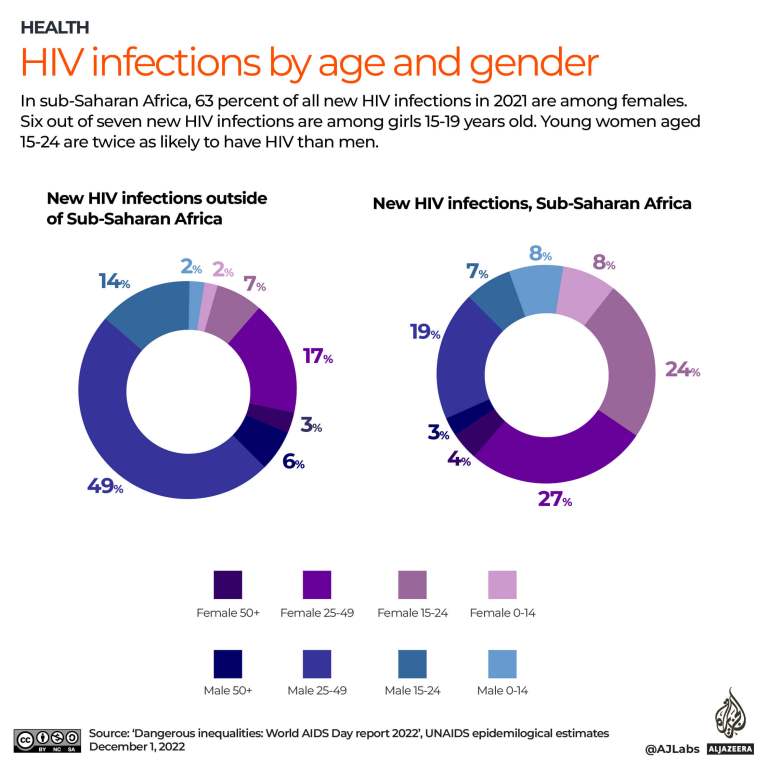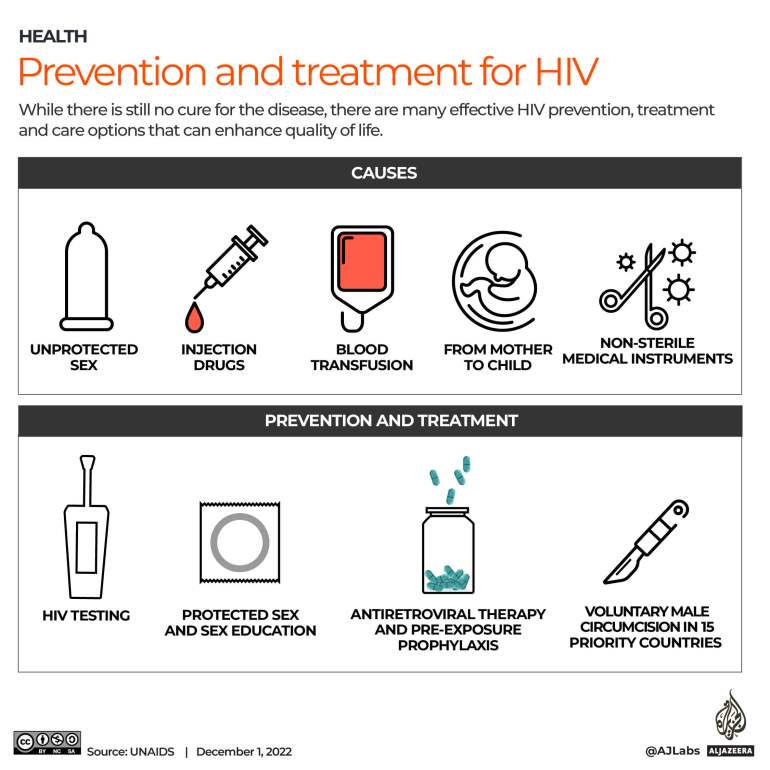Around the world, every week about 4,900 young women aged between 15 and 24 become infected with HIV.
Each year, on December 1, the world commemorates World AIDS Day.
Acquired immune deficiency syndrome (AIDS) is a chronic and potentially life-threatening condition caused by the human immunodeficiency virus (HIV).
HIV attacks the immune system, weakening it to the point where it cannot fight infections.
According to UNAIDS, in 2021, some 1.5 million people became newly infected with HIV, bringing the total number of people living with HIV to 38.4 million.

Global AIDS-related deaths
HIV/AIDS has killed up to 40.1 million people and infected 84.2 million over the past 40 years.
In 2021, some 650,000 people died from AIDS-related illnesses, down 68 percent from its peak of two million deaths in 2004.
Since 2010, new HIV infections have declined by 32 percent, from 2.2 million to 1.5 million in 2021.
Among children, new HIV infections have dropped by 52 percent, from 320,000 in 2010 to 160,000 in 2021.
About 5.9 million people worldwide were not aware of their HIV status in 2021.
While there is still no cure for the epidemic, there are many effective HIV prevention, treatment and care options that can enhance the quality of life.

HIV infections by age and gender
According to the UNAIDS report, Dangerous inequalities: World AIDS Day report 2022, every two minutes, an adolescent girl or young woman aged 15-24 acquired HIV in 2021.
AIDS-related causes remain the third-leading cause of death globally for women aged 15 to 49 years and the fourth-leading cause of death among younger women (aged 15 to 29 years).
In sub-Saharan Africa, six in seven new HIV infections among adolescents aged 15–19 years are among girls. Girls and young women aged 15–24 years are twice as likely to be living with HIV than young men.

Prevention and treatment options
UNAIDS has recommended a range of tools and treatments to tackle HIV.
Sex Education
Sex education is vital for young people to understand how to keep themselves safe from sexually transmitted diseases (like HIV) and avoid unplanned pregnancies.
Access to antiretroviral therapy
In 2021, at least 28.7 million people received access to antiretroviral therapy (ART) – a treatment that reduces the amount of HIV in the blood.
Pre-exposure prophylaxis (PREP)
Pre-exposure prophylaxis (PrEP) entails taking antiretroviral medication prior to possible exposure to HIV. UNAIDS says this has been effective across all populations.
Policies for male circumcision
In countries where there are high rates of HIV transmission, voluntary medical male circumcision (VMMC) can help reduce transmission.

Stay connected with us on social media platform for instant update click here to join our Twitter, & Facebook
We are now on Telegram. Click here to join our channel (@TechiUpdate) and stay updated with the latest Technology headlines.
For all the latest World News Click Here
